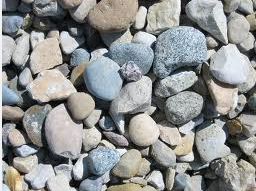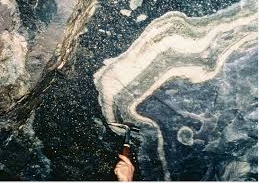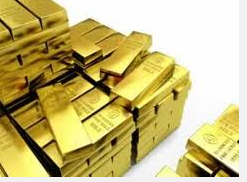Mineral Resources, India: 1911
| (4 intermediate revisions by one user not shown) | |||
| Line 11: | Line 11: | ||
See [[examples]] and a tutorial.</div> | See [[examples]] and a tutorial.</div> | ||
|} | |} | ||
| − | [[Category:India| | + | [[Category:India|M]] |
| − | [[Category:Economy-Industry-Resources| | + | [[Category:Economy-Industry-Resources|M]] |
| − | [[Category: | + | [[Category:Minerals|M]] |
| − | + | ||
Extracted from: | Extracted from: | ||
| Line 28: | Line 28: | ||
Secondly, kindly ignore all references to page numbers, because they refer to the physical, printed book. | Secondly, kindly ignore all references to page numbers, because they refer to the physical, printed book. | ||
| − | |||
| − | |||
| − | |||
| − | |||
| − | |||
| − | |||
==Coal== | ==Coal== | ||
Coal has been known to exist in India since 1774. The first mine at Raniganj dates from 1820, and has been regularly worked up to the present time. Coal of varying quality exists under a very extensive area in India, being found in almost every province and native state with the exception of Bombay and Mysore. In respect, however, of both the number and size of its mines Bengal comes easily first, with seven-eighths of the total output, the largest mines being those of Raniganj, Jherria, and Giridih, while the Singareni mine in Hyderabad comes next. Many of the Bengal mines, however, are very small. There are some important mines in Assam and the Central Provinces. The importance of the Indian coal production lies in the hope that it holds out for the development of Indian industries, especially in connexion with the nascent iron and steel industry. Coal and iron are found in conjunction in the Central Provinces, and the Tata Company has recently been formed to work them on a large scale. The railways already use Indian coal almost exclusively, and Indian coal is being taken yearly in greater quantities by ships trading to Eastern ports. The total output in1905-1906was 8,417,739 tons; while there were 47 companies engaged in coal-mining, of which 46 were in Bengal. | Coal has been known to exist in India since 1774. The first mine at Raniganj dates from 1820, and has been regularly worked up to the present time. Coal of varying quality exists under a very extensive area in India, being found in almost every province and native state with the exception of Bombay and Mysore. In respect, however, of both the number and size of its mines Bengal comes easily first, with seven-eighths of the total output, the largest mines being those of Raniganj, Jherria, and Giridih, while the Singareni mine in Hyderabad comes next. Many of the Bengal mines, however, are very small. There are some important mines in Assam and the Central Provinces. The importance of the Indian coal production lies in the hope that it holds out for the development of Indian industries, especially in connexion with the nascent iron and steel industry. Coal and iron are found in conjunction in the Central Provinces, and the Tata Company has recently been formed to work them on a large scale. The railways already use Indian coal almost exclusively, and Indian coal is being taken yearly in greater quantities by ships trading to Eastern ports. The total output in1905-1906was 8,417,739 tons; while there were 47 companies engaged in coal-mining, of which 46 were in Bengal. | ||
| + | |||
| + | [[File: mineral resources.png| |frame|500px]] | ||
[[File: mineral resources1.png| |frame|500px]] | [[File: mineral resources1.png| |frame|500px]] | ||
| Line 52: | Line 48: | ||
Despite its legendary wealth, which is really due to the accumulations of ages, India cannot be said to be naturally rich in precious stones. Under the Mahommedan rule diamonds were a distinct source of state revenue; and Akbar is said to have received a royalty of £80,000 a year from the mines of Panna. But at the present day the search for them, if carried on anywhere in British territory, is an insignificant occupation. The name of Golconda has passed into literature; but that city, once the Mussulman capital of the Deccan, was rather the home of diamond-cutters than the source of supply. It is believed that the far-famed diamonds of Golconda actually came from the sandstone formation which extends across the south-east borders of the nizam's dominions into the Madras districts of Ganjam and Godavari. | Despite its legendary wealth, which is really due to the accumulations of ages, India cannot be said to be naturally rich in precious stones. Under the Mahommedan rule diamonds were a distinct source of state revenue; and Akbar is said to have received a royalty of £80,000 a year from the mines of Panna. But at the present day the search for them, if carried on anywhere in British territory, is an insignificant occupation. The name of Golconda has passed into literature; but that city, once the Mussulman capital of the Deccan, was rather the home of diamond-cutters than the source of supply. It is believed that the far-famed diamonds of Golconda actually came from the sandstone formation which extends across the south-east borders of the nizam's dominions into the Madras districts of Ganjam and Godavari. | ||
| − | A few poor stones are still found in that region. Sambalpur, on the upper channel of the Mahanadi river in the Central Provinces, is another spot once famous for diamonds. So late as 1818 a stone is said to have been found there weighing 84 grains and valued at £500. The river-valleys of Chota Nagpur are also known to have yielded a tribute of diamonds to their Mahommedan conquerors. At the present day the only place where the search for diamonds is pursued as a regular industry is the native state of Panna in Bundelkhand The stones are found by digging down through several strata of gravelly soil and washing the earth. Even there, however, the pursuit is understood to be unremunerative, and has failed to attract European capital. At the present day the only important industries are the rubies and jade of Burma. The former are worked by the Ruby Mines Company or by licensed native miners under the)(Iv. 13a company. The value of the rubies found has increased rapidly, and the company, which was for some time worked unprofitably under the lease granted in 1896, has now, with the aid of favourable treatment from the government, become more prosperous. Pearls are found off the southern coast of Madras and also in the Mergui archipelago | + | A few poor stones are still found in that region. Sambalpur, on the upper channel of the Mahanadi river in the Central Provinces, is another spot once famous for diamonds. So late as 1818 a stone is said to have been found there weighing 84 grains and valued at £500. The river-valleys of Chota Nagpur are also known to have yielded a tribute of diamonds to their Mahommedan conquerors. At the present day the only place where the search for diamonds is pursued as a regular industry is the native state of Panna in Bundelkhand The stones are found by digging down through several strata of gravelly soil and washing the earth. Even there, however, the pursuit is understood to be unremunerative, and has failed to attract European capital. At the present day the only important industries are the rubies and jade of Burma. The former are worked by the Ruby Mines Company or by licensed native miners under the)(Iv. 13a company. The value of the rubies found has increased rapidly, and the company, which was for some time worked unprofitably under the lease granted in 1896, has now, with the aid of favourable treatment from the government, become more prosperous. Pearls are found off the southern coast of Madras and also in the Mergui archipelago. |
| − | + | ||
| − | + | ||
| − | + | ||
| − | + | ||
| − | + | ||
| − | + | ||
| − | + | ||
| − | + | ||
| − | + | ||
| − | + | ||
| − | + | ||
| − | + | ||
Latest revision as of 16:05, 17 July 2017
This article was written around 1911 when conditions were Readers will be able to edit existing articles and post new articles |
Extracted from:
Encyclopaedia of India
1911.
No further details are available about this book, except that it was sponsored in some way by the (British-run) Government of India.
NOTE: While reading please keep in mind that all articles in this series have been scanned from a book. Therefore, footnotes have got inserted into the main text of the article, interrupting the flow. Readers who spot these footnotes gone astray might like to shift them to the correct place.
Secondly, kindly ignore all references to page numbers, because they refer to the physical, printed book.
Contents |
[edit] Coal
Coal has been known to exist in India since 1774. The first mine at Raniganj dates from 1820, and has been regularly worked up to the present time. Coal of varying quality exists under a very extensive area in India, being found in almost every province and native state with the exception of Bombay and Mysore. In respect, however, of both the number and size of its mines Bengal comes easily first, with seven-eighths of the total output, the largest mines being those of Raniganj, Jherria, and Giridih, while the Singareni mine in Hyderabad comes next. Many of the Bengal mines, however, are very small. There are some important mines in Assam and the Central Provinces. The importance of the Indian coal production lies in the hope that it holds out for the development of Indian industries, especially in connexion with the nascent iron and steel industry. Coal and iron are found in conjunction in the Central Provinces, and the Tata Company has recently been formed to work them on a large scale. The railways already use Indian coal almost exclusively, and Indian coal is being taken yearly in greater quantities by ships trading to Eastern ports. The total output in1905-1906was 8,417,739 tons; while there were 47 companies engaged in coal-mining, of which 46 were in Bengal.
[edit] Gold
The production of gold in India is practically confined to the Kolar gold fields in Mysore. An uncertain but unimportant amount is annually procured by sand-washing in various tracts of northern India and Burma; and there have been many attempts, including the great boom of 1880, to work mines in the Wynaad district of the Madras Presidency. There are also mines in the Hyderabad state from which a small amount of gold is produced. But the output of gold in Mysore represents 99 A. of the annual Indian yield. Modern mining at Kolar dates from 1881, but there are extensive old workings showing that much gold had been extracted under native rule. The mines are worked under leases from the Mysore government, which secure to the state a royalty of 5% of the gold produced. Up to the end of 1903 the total output of the Kolar mines reached the value of £19,000,000.
[edit] Iron
In purity of ore, and in antiquity of working, the iron deposits of India probably rank first in the world. They are to be found in every part of the country, from the northern mountains of Assam and Kumaun to the extreme south of the Madras Presidency. Wherever there are hills, iron is found and worked to a greater or less extent. The indigenous methods of smelting the ore, which are everywhere the same, and have been handed down unchanged through countless generations, yield a metal of the finest quality in a form well suited to native wants. But they require an extravagant supply of charcoal; and even with the cheapness of native labour the product cannot compete in price with imported iron from England. European enterprise, attracted by the richness of the ore and the low rate of wages, has repeatedly tried to establish iron-works on a large scale; but hitherto every one of these attempts has ended in failure with the exception of the iron-works at Barrakur in Bengal, first started in 1865, which after many years of struggle seem to have turned the corner of success. The principal sources of iron-stone at present are the Madras ores, chiefly at Salem, the Chanda ores in the Central Provinces, and the ores obtained at and near Raniganj in Bengal.
[edit] Petroleum
The great oilfields of the Indian empire are in Burma, which supplies 98% of the total output. Of the remainder nearly all comes from Assam. In both provinces the growth of the yield has been very great, the total output in 1901 being six times as large as in 1892; but even so it has failed to keep pace with the demand. A regular service of steamers carries oil in bulk from Rangoon to Calcutta, and now Burmese oil competes with the Russian product, which had already driven the dearer American oil from the market (see Burma). ==Other Ores==. - Manganese ore is found in very large quantities on a tract on the Madras coast about midway between Calcutta and Madras. Most of the ore goes to Great Britain. There are also valuable deposits of manganese in the Central Provinces and, it is believed, in Burma. The export of manganese, which had been only about ten years in existence in 1905-1906, amounted then to 316,694 tons, with a value of £250,000. Mica has long been obtained in Bengal, chiefly in the Hazaribagh district, and there is a rubycoloured variety which is held in great estimation. In Madras also a mica industry has recently grown up. Tin is found in the Tavoy and Mergui districts of Lower Burma, and has for many years been worked in an unprogressive manner chiefly by Chinese labour. In 1900 tin of good quality was found in the Southern Shan States. Copper ore is found in many tracts throughout India, plumbago in Madras, and corundum in southern India.
[edit] Precious Stones
Despite its legendary wealth, which is really due to the accumulations of ages, India cannot be said to be naturally rich in precious stones. Under the Mahommedan rule diamonds were a distinct source of state revenue; and Akbar is said to have received a royalty of £80,000 a year from the mines of Panna. But at the present day the search for them, if carried on anywhere in British territory, is an insignificant occupation. The name of Golconda has passed into literature; but that city, once the Mussulman capital of the Deccan, was rather the home of diamond-cutters than the source of supply. It is believed that the far-famed diamonds of Golconda actually came from the sandstone formation which extends across the south-east borders of the nizam's dominions into the Madras districts of Ganjam and Godavari.
A few poor stones are still found in that region. Sambalpur, on the upper channel of the Mahanadi river in the Central Provinces, is another spot once famous for diamonds. So late as 1818 a stone is said to have been found there weighing 84 grains and valued at £500. The river-valleys of Chota Nagpur are also known to have yielded a tribute of diamonds to their Mahommedan conquerors. At the present day the only place where the search for diamonds is pursued as a regular industry is the native state of Panna in Bundelkhand The stones are found by digging down through several strata of gravelly soil and washing the earth. Even there, however, the pursuit is understood to be unremunerative, and has failed to attract European capital. At the present day the only important industries are the rubies and jade of Burma. The former are worked by the Ruby Mines Company or by licensed native miners under the)(Iv. 13a company. The value of the rubies found has increased rapidly, and the company, which was for some time worked unprofitably under the lease granted in 1896, has now, with the aid of favourable treatment from the government, become more prosperous. Pearls are found off the southern coast of Madras and also in the Mergui archipelago.


